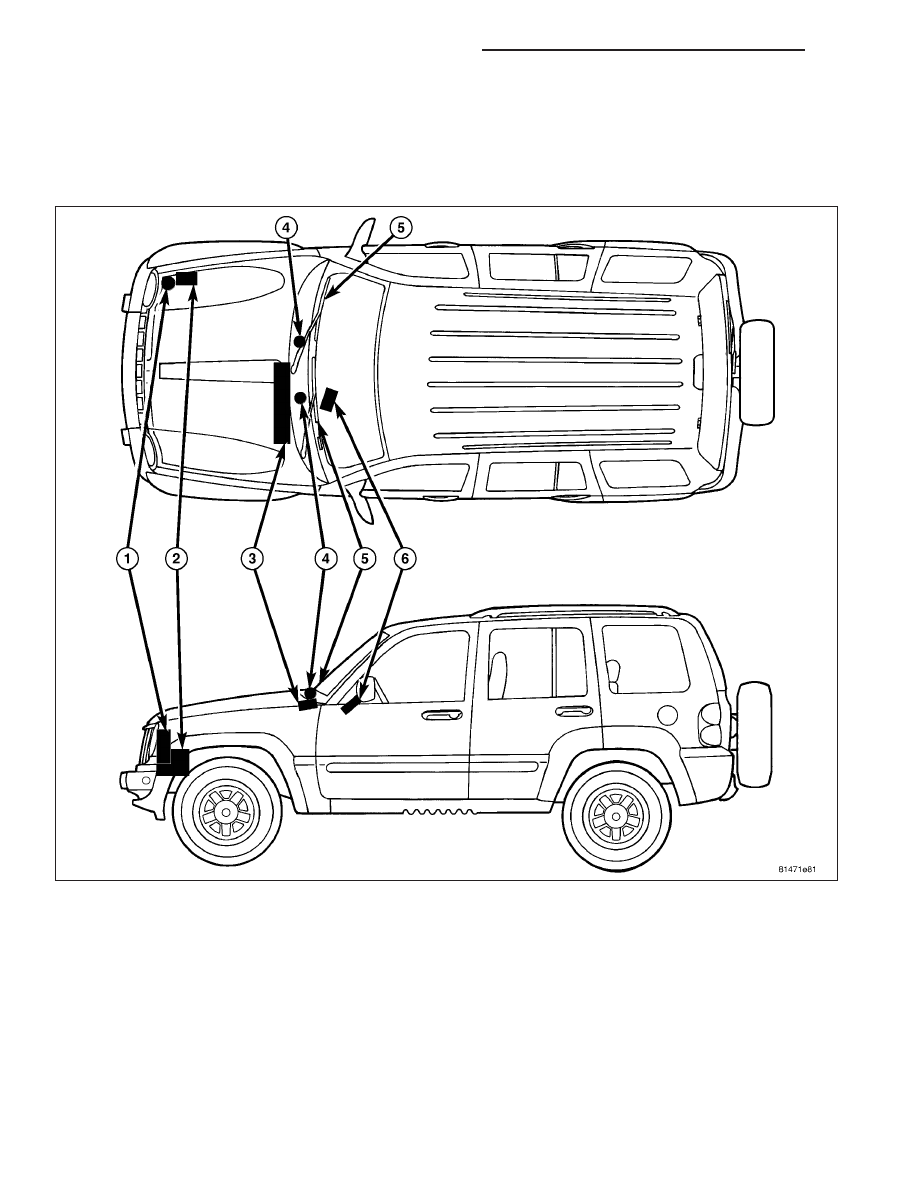Jeep Liberty KJ. Manual - part 308

WIPERS/WASHERS - SERVICE INFORMATION
DESCRIPTION
FRONT
An electrically operated intermittent front wiper and washer system is standard factory-installed safety equipment on
this vehicle. The wiper and washer system includes the following major components, which are described in further
detail elsewhere in this service information:
•
Body Control Module - The Body Control Module (BCM) is located on the Junction Block (JB) under the
driver side outboard end of the instrument panel. (Refer to 8 - ELECTRICAL/ELECTRONIC CONTROL MOD-
ULES/BODY CONTROL MODULE - DESCRIPTION).
•
Front Check Valve - The front washer system check valve is integral to the wye fitting located in the washer
plumbing between the cowl plenum washer hose and the front washer nozzles, and is concealed beneath the
cowl plenum cover/grille panel at the base of the windshield.
•
Front Washer Nozzle (4) - Two fluidic front washer nozzles are secured by integral latch features to dedicated
openings in the cowl plenum cover/grille panel located near the base of the windshield.
•
Front Washer Plumbing - The plumbing for the washer system consists of rubber hoses and molded plastic
fittings. The plumbing is routed along the right side of the engine compartment from the washer reservoir, and
8R - 24
WIPERS/WASHERS - SERVICE INFORMATION
KJ